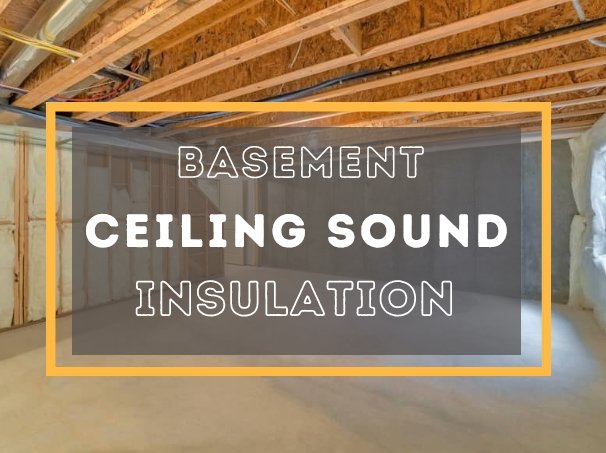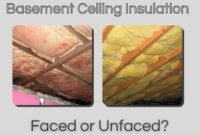Many homeowners think about having basement ceiling sound insulation to keep the noise to themselves. Granted, the basement itself has been constructed with its own sound-dampening characteristics because of its location which is ‘under the ground’.
But then again, many don’t want to bother others with the noise while immersing themselves in their own entertainment systems.
Although the basement is a perfect place to enjoy your entertainment, the ceiling isn’t exactly soundproof. That’s why basement ceiling insulation can address your issue, creating your own space that won’t disturb others – and others can’t disturb you, either.
The Basic for Soundproofing Action
When we are talking about sound, we are talking about vibrations. Regardless of the room, we are trying to stop the vibrations from moving and traveling. As mentioned before, the basement is already quiet and has soundproof quality.

But the ceiling isn’t. That’s why most homeowners want basement ceiling insulation, so the sound from their basement won’t escape to the upper floors.
There are some basic facts about soundproofing the room. You need to:
- Add mass
- Decouple surfaces
- Damp the vibrations
- Seal the gaps
- Absorb the sound waves
Some people may only use one or two of these systems, but others may use a combination. Combined, the effect is better; you can expect an impeccable soundproof basement.
Does Insulating Basement Ceiling Reduce Noise?
The reason why most homeowners want to have basement ceiling sound insulation is because of the leaking noise. A regular subfloor, especially made of wood, cannot provide good soundproofing quality. This type of floor usually has gaps, and sound can escape those gaps. Moreover, the floor vibrates (in resonance) with the sound waves, making it easy for the sound to pass through.
So, can you reduce noise by insulating the basement ceiling? Basically, yes. If you do it right and you choose the right materials, then you can block out the noise and have a quieter environment.
Best Insulation for Soundproofing Basement Ceiling
Fiberglass has been one of the most popular basement ceiling sound insulation. Not only is it affordable, but it also delivers great performance and is easy to install. But mineral wool has increased in popularity over the last few years. It also has batts for easy installation and can be easily cut to fit any surface.
They are the same but different in how they are created. Fiberglass is made from (fine) glass fibers, and mineral wool is from stone-based material. The latter can consist of recycled steel slag or basalt rock.
In terms of price, they are also different. Fiberglass is cheaper, costing less than around 1/3 of the price of mineral wool. Fiberglass batts cost between $0.30 to $1.50 per square foot, while mineral wool is from $1.40 to around $2.10.
Fiberglass is quite effective in insulating sounds and heat. But because of the technology, mineral wool has better performance. Mineral wool has an STC (Sound Transmission Class) rating from 45 to 52, while fiberglass’ STC rating is ‘only’ 36. From this fact alone, mineral wool is better at creating a barrier for sound, especially when compared to fiberglass.
Read also: Does Insulation Help With Sound, and How Does It Work?
It doesn’t mean that fiberglass is lousy. It depends to your budget and preferences too. If you can afford mineral wool, then go with it. But if not, then fiberglass should do it.
Conclusion
If you don’t know what to do or where to start, it’s better to consult the pro instead of having a DIY project. You want proper and correct basement ceiling sound insulation so you won’t have to waste money and time.


